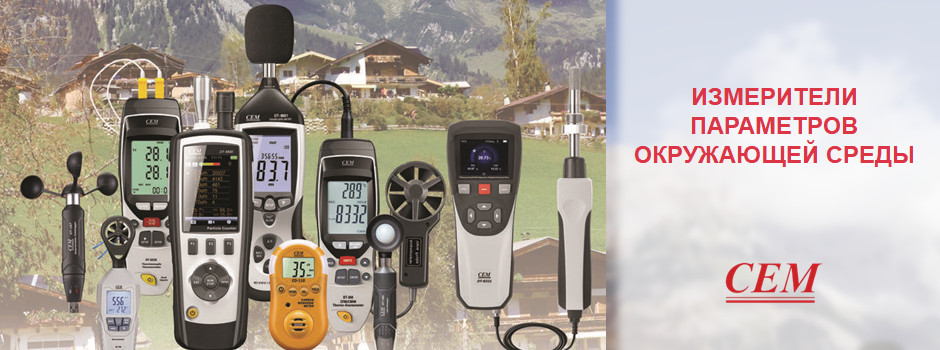Scope of application
The environmental parameter meter can be used in various fields.
The devices can be used for:
- Checking and fixing the environmental conditions, as well as the air in the workplace, it is especially important to ensure their control in production workshops and in hazardous industries;
- Settings and maintenance of climatic equipment, including heating, air conditioning and ventilation systems, in this case, the flow rate of air or coolant, its temperature, fan speed, and so on are controlled;
- Implementation of environmental supervision in urban conditions;
- Verification of compliance with requirements and norms in various industries, most often used in the food, chemical, cosmetology industry.
The manufacturer CEM offers various devices for monitoring the environment parameter. Consider noise meters, luxmeters and thermal anemometers.
Noise meters
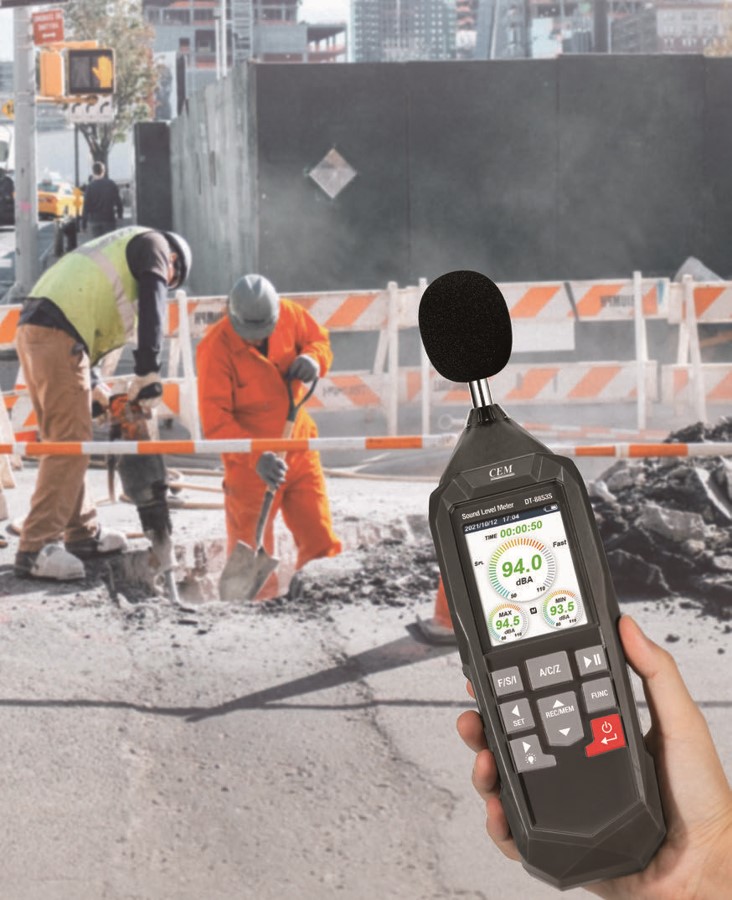 The noise meter is an electronic device that objectively determines the level of audible sounds in the range of 30-130 dB. A variety of models of the SEM device allows you to choose a device for solving virtually any measurement tasks.
The noise meter is an electronic device that objectively determines the level of audible sounds in the range of 30-130 dB. A variety of models of the SEM device allows you to choose a device for solving virtually any measurement tasks.
Application of the measuring device SEM
The noise recorder is primarily used for everyday monitoring of the noise insulation of the room and for inspection control. For household purposes, you can detect noise from a kitchen hood or a personal computer.
Noise meter selection criteria
When deciding on the purchase of a noise measurement device, it is important to pay attention to the following characteristics:
- dynamic and frequency ranges;
- measurement time and their frequency;
- limit values of temperature, humidity and pressure during operation;
- the type of correction filters used;
- the function of saving data to internal memory;
- PC connection option.
CEM noise meter interface
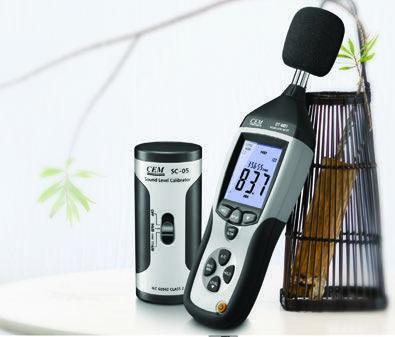 Data on measurement parameters, operating mode, battery level is displayed on the displays of the device equipped with optimal illumination. Several function keys provide easy and intuitive operation for comfortable and efficient use of the device. The option of automatic shutdown during long downtime guarantees the battery life. The durable plastic housing of the noise processing device has reliable protection against mechanical damage, moisture and dust ingress. The operating temperature is 0-40°C.
Data on measurement parameters, operating mode, battery level is displayed on the displays of the device equipped with optimal illumination. Several function keys provide easy and intuitive operation for comfortable and efficient use of the device. The option of automatic shutdown during long downtime guarantees the battery life. The durable plastic housing of the noise processing device has reliable protection against mechanical damage, moisture and dust ingress. The operating temperature is 0-40°C.
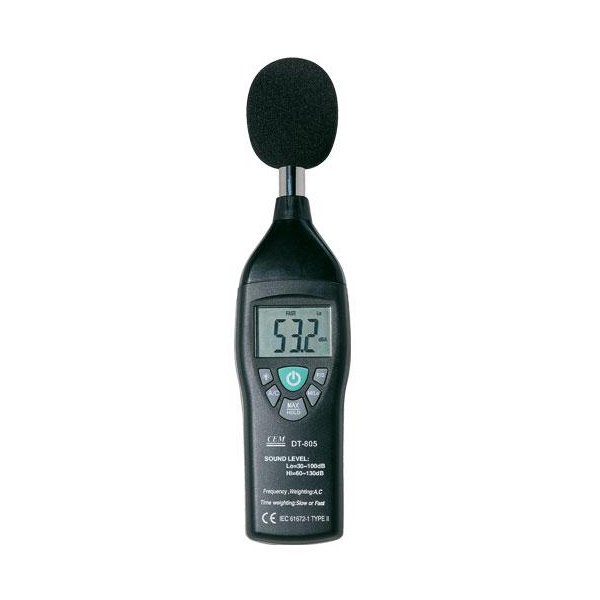 |
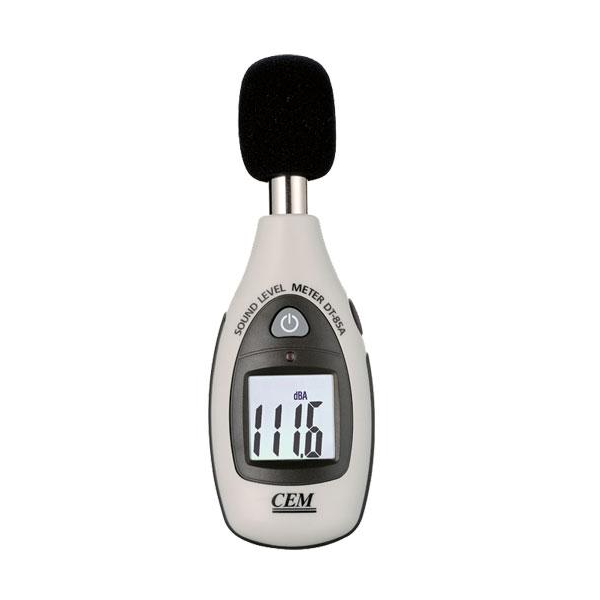 |
Luxmeters
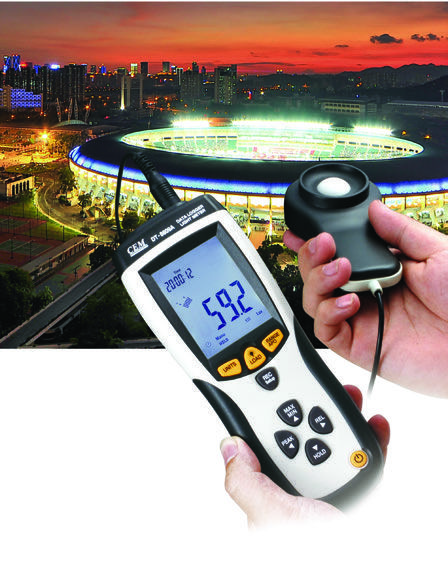 To find out the actual illumination provided by a natural or artificial light source, use a luxmeter. This is a complex device that allows you to determine the level of light radiation.
To find out the actual illumination provided by a natural or artificial light source, use a luxmeter. This is a complex device that allows you to determine the level of light radiation.
Application areas
Illumination is an important parameter that affects the health of children and adults, affects the efficiency of staff, the mood of visitors, buyers, customers.
Using a luxmeter:
- measure the degree of illumination in residential and industrial premises, in institutions, schools, kindergartens, retail outlets, etc.;
- perform research for the certification of workplaces;
- check the characteristics of lighting devices when performing installation work;
- adjust the brightness of light advertising, signal light sources;
- identify lamps that need to be replaced due to wear, etc.
In addition, luxmeters are widely used in greenhouses and greenhouses to make sure that plants receive enough light for normal growth. Photographers need these devices to determine exposure. Devices that are equipped with brightness meters are able to determine the degree of monitor pulsation and LED flickering.
Working principle and types
Inside the luxmeter is a semiconductor photocell. When light hits its surface, some of the electrons are released. The more intense the flow, the more the bandwidth of the photosensitive element changes.
The processor processes the received information and outputs indicators to the monitor. To get accurate data, you need to position the sensor correctly in relation to the light flow. After taking measurements, the photocell must be closed so that the light does not fall on it.
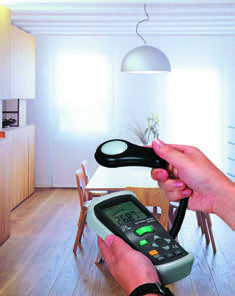 Digital luxmeters are produced in the form of a monoblock or with a remote digital sensor. Measurement of illumination within 300000...500000 lux with an error of 3.0-5.0%. The devices are enclosed in a durable plastic case with smooth shapes. It fits comfortably in your hand, does not slip.
Digital luxmeters are produced in the form of a monoblock or with a remote digital sensor. Measurement of illumination within 300000...500000 lux with an error of 3.0-5.0%. The devices are enclosed in a durable plastic case with smooth shapes. It fits comfortably in your hand, does not slip.
Luxmeters in the form of a monoblock, suitable for performing inspection checks. Products with a remote sensor give considerable scope for measurements at different points. They are appropriate where a large amount of data about the light flux is needed.
Some meter models are configured to calculate averaged data based on multiple measurements. This function makes it possible to identify areas with uneven illumination. Additional filter absorbers extend the measurement range. Such devices are needed when exploring areas with high light intensity.
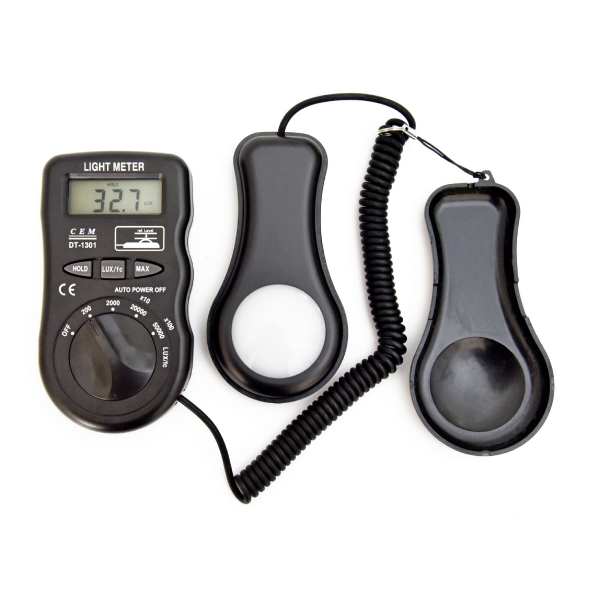 |
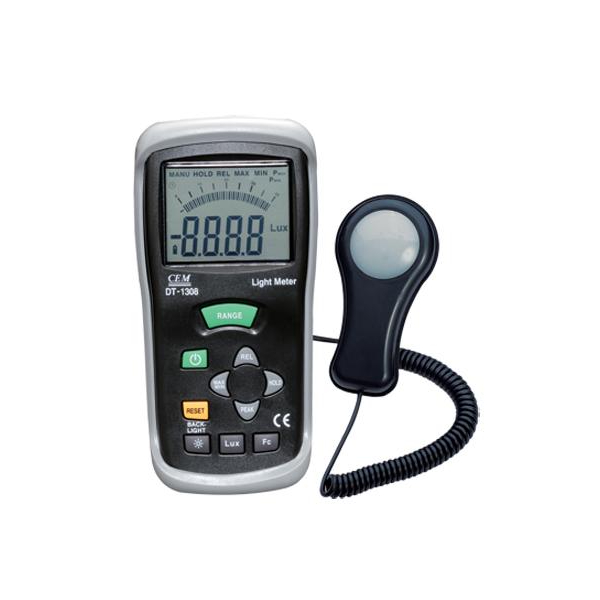 |
Thermoanemometers
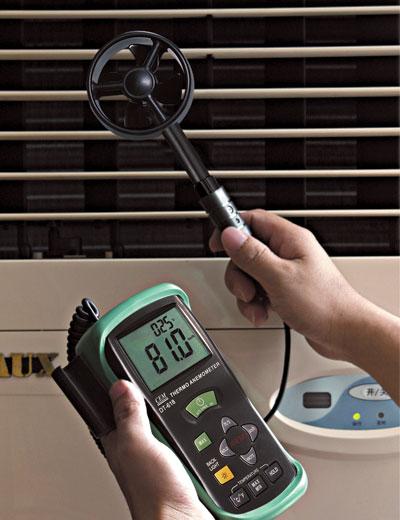 A thermoanemometer is a device that is used to simultaneously measure the air flow velocity and its temperature. If you need to monitor air mass indicators at metrology stations, in an office, in production, check the operability of air conditioning, heating, ventilation systems, determine the volumetric flow rate, direction and flow rate, its temperature – the air flow velocity and temperature meterexactly the device that is required.
A thermoanemometer is a device that is used to simultaneously measure the air flow velocity and its temperature. If you need to monitor air mass indicators at metrology stations, in an office, in production, check the operability of air conditioning, heating, ventilation systems, determine the volumetric flow rate, direction and flow rate, its temperature – the air flow velocity and temperature meterexactly the device that is required.
The scope of application of thermoanemometers is quite extensive – energy, construction, agriculture, industry, building maintenance, etc. Therefore, when choosing such a meter, it is important to correlate the functional features of the device and the scope of its application.
Design features
Structurally, the thermoanemometer consists of two interconnected parts – a probe for measurement and a control unit with a display. Measuring devices can be presented in two types – portable (portable) and stationary.
Portable devices are a compact device in a plastic or metal case. For ease of use, portable thermoanemometers are equipped with a telescopic probe, which allows measurements to be carried out as close as possible to the source of air masses (air duct).
Stationary type devices are installed in pre-determined places of the room and are not subject to movement. All information collected by the meters is transmitted to a single control panel.
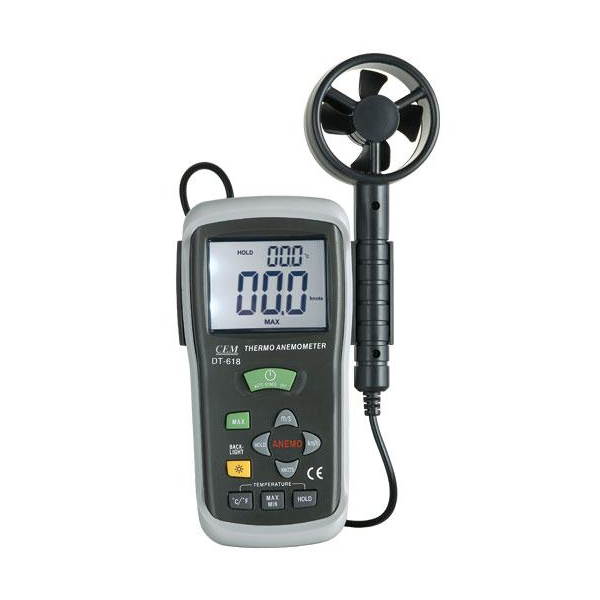 |
 |
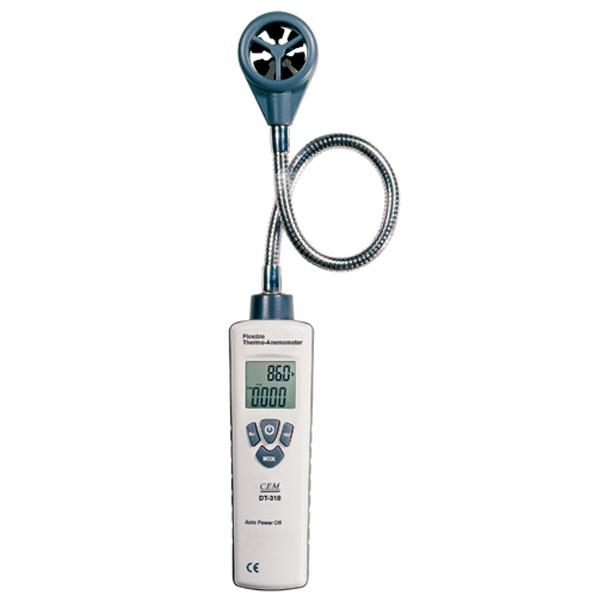 |
CEM product catalog

